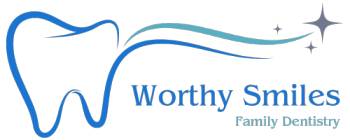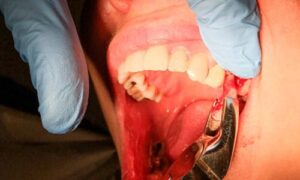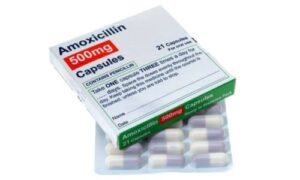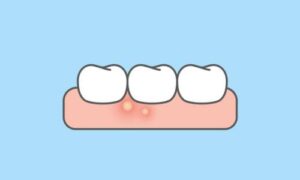Scalloping on the tongue, also known as scalloped or crenated tongue, refers to indentations or impressions along the sides of the tongue. While it might seem minor, it can sometimes indicate underlying health conditions that require attention. In this article, we will discuss the causes, symptoms, and treatment options for scalloping on the tongue, shedding light on this often-overlooked aspect of oral health.
What Causes Scalloping on the Tongue?
Scalloping on the tongue is typically benign but can indicate an underlying problem. Some common causes include:
- Teeth Misalignment: One of the most common causes of scalloping on the tongue is teeth misalignment, also known as malocclusion. When the teeth do not fit together properly, the tongue may push against them during sleep, leading to indentations along the sides of the tongue.
- Bruxism: Bruxism, or teeth grinding, is another common cause of scalloping on the tongue. Grinding the teeth during sleep can put pressure on the sides of the tongue, resulting in indentations.
- Enlarged Tongue: Sometimes, scalloping on the tongue may be caused by an enlarged tongue, a condition known as macroglossia. This can be due to various factors, including genetics, obesity, or underlying medical conditions such as hypothyroidism or amyloidosis.
- Obstructive Sleep Apnea (OSA) is a sleep disorder characterized by pauses in breathing during sleep due to blocked airways. People with OSA may experience scalloping on the tongue, which occurs when the tongue presses against the teeth or the mouth walls to maintain an open airway.
- Nutritional Deficiencies: Deficiencies in certain vitamins and minerals, such as vitamin B12, iron, or folate, can lead to changes in the size and shape of the tongue, which may contribute to scalloping.
- Medications: Some medications, such as those used to treat high blood pressure or psychiatric disorders, may cause dry mouth or changes in saliva production, which can, in turn, lead to scalloping on the tongue.
Symptoms of Scalloping on the Tongue
The primary symptom of scalloping on the tongue is the presence of indentations or impressions along the sides of the tongue. These indentations may vary in depth and severity, depending on the underlying cause. In addition to scalloping, individuals with this condition may experience other symptoms such as:
- Soreness or discomfort: The pressure exerted on the tongue from teeth misalignment or bruxism may cause soreness or pain, especially upon waking up in the morning.
- Difficulty swallowing: Individuals may experience difficulty swallowing or speaking when the tongue is significantly enlarged.
- Snoring or breathing difficulties during sleep: Scalloping on the tongue may be associated with obstructive sleep apnea, which can manifest as snoring, gasping for air during sleep, or daytime fatigue.
- Changes in taste sensation: Some individuals may notice changes in their ability to taste certain foods due to alterations in the shape or size of the tongue.
- Dry mouth: Certain medications or medical conditions contributing to scalloping on the tongue may also cause dry mouth, exacerbating symptoms.
Diagnosis and Treatment
If you notice scalloping on your tongue or experience any associated symptoms, it is important to consult a healthcare professional for proper diagnosis and treatment. During a physical examination, your doctor may inspect your tongue and ask about your medical history and any symptoms you may be experiencing. Depending on the suspected cause, additional tests or imaging studies may be ordered to rule out underlying conditions.
Treatment for scalloping on the tongue focuses on addressing the underlying cause and relieving associated symptoms. Some common treatment options include:
Orthodontic Treatment
Orthodontic treatment is often recommended to address teeth misalignment. This can involve braces or clear aligners, which work to realign the teeth and create a more even bite. By correcting the alignment, these devices help alleviate the pressure exerted on the sides of the tongue. Properly aligned teeth prevent the tongue from pressing against the teeth and enhance oral functionality and aesthetics. Orthodontic interventions, tailored to the severity and nature of the misalignment, can significantly reduce scalloping on the tongue and improve the patient’s comfort and oral health.
Mouthguards for Bruxism
For individuals suffering from bruxism, custom-fitted mouthguards are an effective solution for the nightly grinding or clenching of teeth. These mouthguards, typically worn during sleep, cushion the teeth and reduce the impact of grinding, preventing the tongue from being pressed against the teeth. By mitigating this nocturnal activity, mouthguards help reduce the formation of indentations on the tongue and protect the teeth from wear and damage. The use of mouthguards should be accompanied by stress-reducing techniques and other therapies aimed at addressing the underlying causes of bruxism.
Treatment for Obstructive Sleep Apnea
If obstructive sleep apnea (OSA) is identified as contributing to scalloping on the tongue, several treatment options can be pursued. Lifestyle modifications, such as weight loss and altering sleeping positions, can significantly impact the severity of OSA. Continuous positive airway pressure (CPAP) therapy, which involves wearing a mask that delivers a steady stream of air to keep the airways open during sleep, is another common and effective treatment. Additionally, oral appliances designed to reposition the lower jaw and tongue can help maintain an open airway. These interventions improve sleep quality and reduce the tongue’s tendency to press against the teeth, alleviating scalloping.
Nutritional Supplementation
Addressing nutritional deficiencies is crucial for improving overall oral health and reducing symptoms of scalloping on the tongue. If vitamin deficiencies such as B12, iron, or folate are detected, appropriate supplementation can be recommended. These nutrients are vital in maintaining healthy tissues and promoting tongue function and other oral structures. By correcting these deficiencies, patients can often see improvements in the size and shape of their tongue, reducing the likelihood of indentations. Nutritional advice may include dietary adjustments to ensure a balanced intake of essential vitamins and minerals.
Medication Adjustments
Consult a healthcare provider if medications cause dry mouth or scalloping on the tongue. Adjusting dosages or switching to alternatives can help. Medicines for high blood pressure or psychiatric disorders often affect saliva production. Under medical supervision, changes can minimize tongue issues and reduce scalloping.
Lifestyle Modifications
Lifestyle changes can significantly enhance oral health and mitigate symptoms of scalloping on the tongue. Avoiding tobacco and alcohol, which can irritate the mouth and affect saliva production, is crucial. Practising good oral hygiene by brushing teeth twice daily, flossing regularly, and using mouthwash can help maintain a healthy oral environment. Staying hydrated is also essential, as adequate fluid intake supports saliva production and prevents dry mouth. Regular dental check-ups allow for early detection and management of oral health issues, ensuring that the tongue and other structures remain healthy.
Good Oral Hygiene Practices
Maintaining good oral hygiene is fundamental in preventing complications associated with scalloping on the tongue. Brushing teeth at least twice daily with fluoride toothpaste removes plaque and food particles that can harbour bacteria. Daily flossing helps clean between the teeth and along the gum line, areas often missed by brushing alone. An antimicrobial mouthwash can further reduce bacterial load and promote a healthier oral environment. Additionally, scheduling regular dental check-ups ensures professional cleaning and timely intervention for any emerging oral health issues, thereby maintaining the overall integrity of the oral cavity and reducing the risk of scalloping on the tongue.
In addition to seeking medical treatment, practising good oral hygiene is essential for maintaining overall oral health and preventing complications associated with scalloping on the tongue. This includes brushing your teeth twice daily, flossing daily, using mouthwash, and scheduling regular dental check-ups.
Closing of Scalloping on Tongue
Scalloping on the tongue is a common condition characterized by indentations or impressions along the sides of the tongue. While often benign, it can sometimes indicate underlying health issues such as teeth misalignment, bruxism, obstructive sleep apnea, or nutritional deficiencies. Suppose you notice scalloping on your tongue or experience associated symptoms such as soreness, difficulty swallowing or snoring. In that case, it is important to consult a healthcare professional for proper diagnosis and treatment. With appropriate medical care and lifestyle modifications, scalloping on the tongue can be effectively managed, helping to improve oral health and overall well-being.














